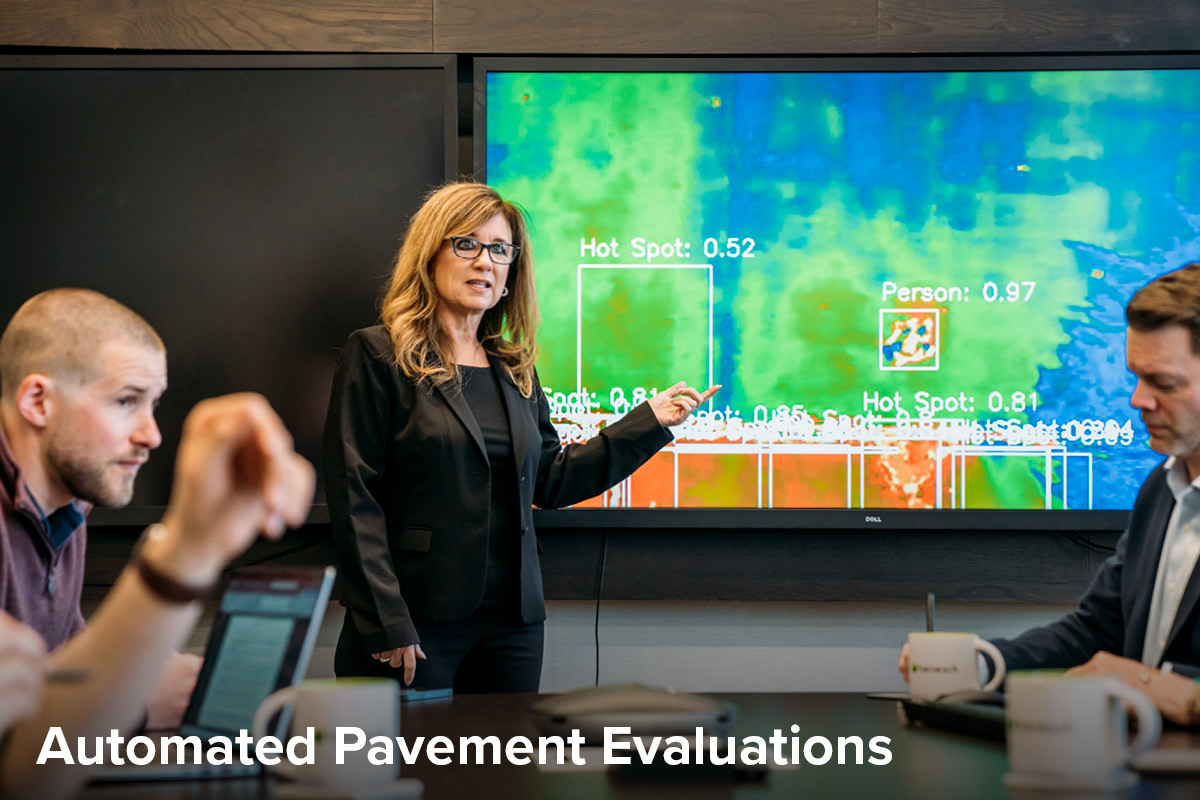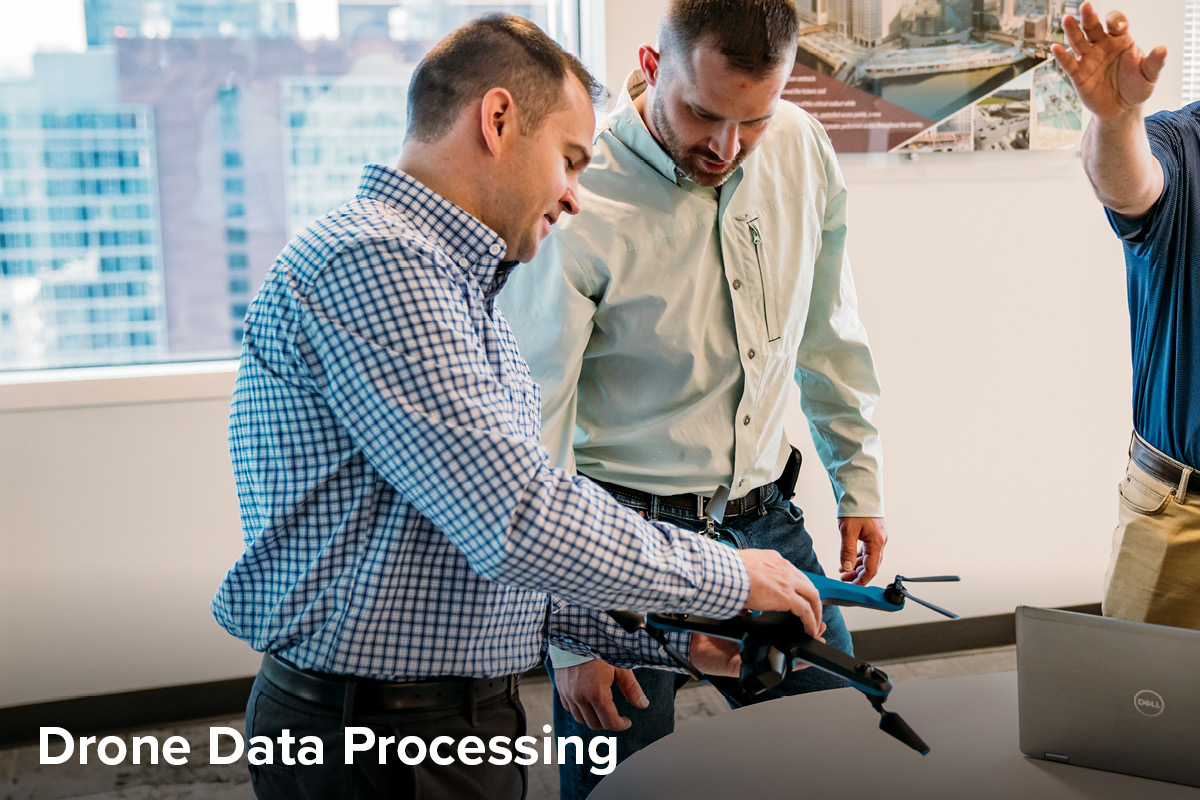Harnessing AI & ML to Manage Municipal Assets

Budgets are tight, infrastructure is aging and agencies are expected to do more with less. But how? Advancing artificial intelligence (AI) technology is uncovering a path to more efficient and accurate asset management.
At the recent American Association of Public Works PWX Conference, Benesch asset management experts Chris Harker, Steve Roth and Jarrod Russell took the stage to share their AI strategies for the efficient management of municipal assets. Explore their key insights below.
Overview of AI & ML
From manufacturing to medicine, AI has been making waves in nearly every industry. It’s being used to improve efficiency, reduce human error and even enhance quality of life. Before exploring the intersection of AI and asset management, it’s important to know a few key terms:
- Artificial Intelligence: Machines that mimic human intelligence and cognitive functions like problem-solving and learning. There are three types: Artificial Narrow Intelligence (ANI), Artificial General Intelligence (AGI) and Artificial Super Intelligence (ASI).
- Machine Learning: A subset of Artificial Intelligence that uses statistical techniques to enable machines to improve at tasks with experience. It requires structured data and human interaction.
- Deep Learning: A subset of Machine Learning using neural networks that mimic how the human brain functions to simulate decision-making power.

When AI Meets AM: The Benefits
By incorporating AI-driven methods into asset management programs, municipalities can revolutionize how they manage assets. While the applications are potentially endless—and ever-evolving—four stand out:
- Automated Data Collection: Accurate and accessible data is critical for a proactive asset management program. Traditional data collection often takes a boot-on-the-ground approach that is not only time consuming but also a very subjective process. AI has the power to automate data collection by analyzing footage of assets. Footage can be taken by something as simple as a smartphone or as advanced as a thermal drone. It is proving to be a fast and accurate way to collect data on a myriad of asset types.
- Real-Time Monitoring & Diagnostics: AI can be used to both collect real-time data on the condition of assets and analyze the data in real time to identify issues, such as structural weakness, system malfunctions, or environmental hazards. This can improve operational efficiency and lead to cost savings by extending asset life, minimizing downtime and improving services.
- Predictive Maintenance: While AI can’t see the future (yet) it can analyze past maintenance records and current condition data to predict the maintenance needs of assets. This helps municipalities make informed maintenance decisions and confidently allocate resources.
- Enhanced Risk Management: Machine learning models can identify and assess risks related to the aging of infrastructure and even suggest preventive measures. This supports a more proactive approach to asset management.
Navigating the Challenges
While the benefits are enticing, there are challenges and barriers to implementing AI and ML solutions in municipal asset management that need to be addressed.
With AI’s quick rise in popularity, it is tempting to incorporate the technology as quickly as possible into your program. However, preparation is key to success. To set your program up for long-term success, it is essential to establish clear goals, objectives and key performance indicators (KPIs). This involves setting specific expectations for AI and determining the means to measure progress and project return on investment (ROI). It is crucial to remember that AI should not replace the decision-making and accountability of staff but rather enhance these processes. Additionally, acquiring and maintaining talent is vital for the scalability and expandability of AI initiatives.
When implementing AI into asset management programs, addressing data structure challenges is crucial for success. One significant issue is the lack of accessibility, often caused by legacy programs and inefficient data migration processes. Various platforms and siloed departments can further complicate data integration, leading to inconsistent data formatting and naming conventions. Additionally, organizational governance poses its own set of challenges, including concerns regarding data privacy, the choice between cloud and on-site data storage, and the need for robust firewall and security protocols.
AI and machine learning systems are only as good as the data they rely on; hence the adage “Garbage In = Garbage Out” holds true. Poor data quality can lead to unexpected, non-repeatable, and indefensible outcomes, undermining the reliability of AI-driven insights. A lack of a comprehensive data profiling strategy exacerbates these issues. For AI to be effective, data must be accurate, complete, reliable and timely. Only by prioritizing data quality will municipalities be able to harness the full potential of AI in their asset management programs.
When implementing AI into asset management, it is essential to consider the technology requirements. Initially, the cost of acquiring and integrating hardware and software can be substantial. This process is further complicated by the need to unify various platforms and siloed departments, ensuring compatibility with both existing and outdated systems. As the implementation progresses, maintaining and evolving the system presents its own challenges. Investment in robust data governance strategies is also crucial to ensure the integrity and security of the AI-driven asset management system.
For asset management programs to benefit from AI, human cooperation is crucial. New technology can disrupt established workflows and necessitate adaptation. It is natural for staff to resist change, so addressing their fears and providing comprehensive training are essential steps. Organizations must also adapt recruitment and retention strategies to target professionals with expertise in AI and data science. By addressing these human-centric challenges, organizations can create a supportive environment conducive to the successful integration of AI into their asset management programs
Challenges related to bias and regulatory compliance also need to be addressed. To avoid bias, it is crucial to integrate public needs, desires and constraints into decision-making processes. This includes accounting for socio-economic and equity-driven goals to ensure that AI decisions are fair and representative of all users. Providing diverse data sets is essential to avoid bias and facilitate transparency in AI-driven decisions. On the regulatory side, maintaining accountability frameworks is vital, alongside addressing data privacy concerns through data minimization and anonymization techniques. Meeting state and federal regulations is also crucial to ensure compliance and maintain public trust. By addressing these issues, municipalities can mitigate the risks and enhance the effectiveness of AI in asset management programs.

Ready to Revolutionize Your AM Approach?
To help municipalities navigate the challenges and reap the benefits of AI, we’ve identified six best practices that can be followed to enhance the effectiveness of AI applications used in asset management programs.

1. Set Data Governance Policies
Ensure the integrity, security and appropriate use of data by setting appropriate policies.

2. Engage Stakeholders
Foster a collaborative environment to enable various perspectives and expertise to contribute to the program’s success.

3. Drive Transparency & Accountability
Work to build trust and ensure that AI applications are used responsibly and ethically.

4. Explore Products & Solutions
Be open to trying new products and solutions, as innovation can lead to more efficient and effective asset management strategies.

5. Start Small
Identify specific problems that AI/ML can solve effectively and train employees on using AI tools to enhance their workflows.

6. Collaborate with Consultants
Lean on consultants and vendors with specialized knowledge and resources to navigate complex AI technologies.

Getting Started – We’re Here to Help
Even with the best practices in mind, implementing Al can seem intimidating. Whether you are just getting started or are looking to advance your efforts, Benesch can help.
By leveraging our specialized training and extensive practical experience, we’ll partner with you to develop AI-powered solutions for inspecting, operating, maintaining and improving physical assets.
Complete the linked form below to get in touch with our experts.
Get in Touch











